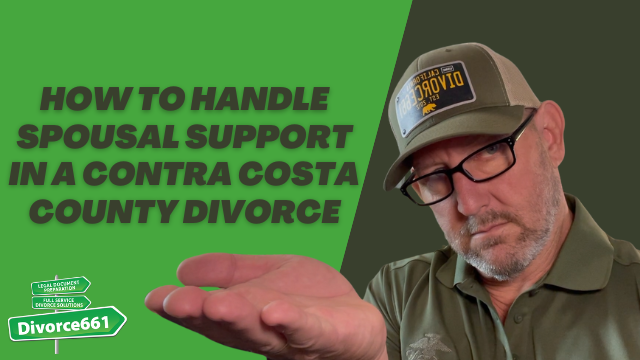🤔 Should Woman 👩 Have to pay Men 👨 SPOUSAL SUPPORT? Uncontested California Divorce
I want to ask you a serious question: what do you think about men who accept alimony from their wife?
Why this question matters
Spousal support is one of those topics that stirs strong opinions. People sometimes assume support is a one-way street: men pay, women receive. But California family law is gender neutral. Whether a man receives alimony from his wife depends on need, ability to pay, and the facts of the marriage—not on stereotypes.
What is spousal support in California?
Spousal support, often called alimony, is money one spouse pays to the other following separation or divorce to help maintain the supported spouse’s living standard or until they become self-sufficient. In California, support appears in a few different forms:
- Temporary (pendente lite) support — ordered while the case is pending to address immediate needs.
- Post-judgment or long-term spousal support — set in the final judgment and may last a set period or be indefinite depending on the marriage.
- Agreed support — couples can negotiate terms in an uncontested divorce and present them to the court for approval.
How courts decide who pays
California judges use a list of factors under Family Code 4320 to determine spousal support. These factors are applied regardless of gender:
- Each spouse’s earning capacity and marketable skills
- Time needed for education or training to gain employment
- Obligations to support children or others
- Standard of living during the marriage
- Length of the marriage
- Age and health of the parties
- Efforts to achieve self-sufficiency and history of employment
- History of domestic violence, if any
- Tax consequences and ability to pay
- Any other factors the court deems relevant
Uncontested divorces: more flexibility, but still careful review
In an uncontested divorce, couples can craft their own spousal support arrangements. That flexibility allows creative solutions such as:
- Lump sum payments instead of ongoing monthly support
- Short-term rehabilitative support tied to completing training or education
- Clear termination triggers like remarriage, cohabitation, or a set end date
Even so, a judge must approve the agreement. The court will ensure the terms are not unconscionable and that both parties entered the agreement knowingly and voluntarily.
Common misconceptions and social stigma
There is still social stigma around men receiving spousal support. Some people see it as emasculating or unfair. Legally, however, support is awarded based on objective criteria. The law does not prefer one gender over another.
As gender roles shift, it is increasingly common for the lower-earning spouse to be male, especially when a partner sacrificed career opportunities to raise children or support a spouse’s career. The goal of spousal support is to address economic disparities created during the marriage.
Practical considerations and tips
If you are negotiating or facing a claim for spousal support, consider these points:
- Document incomes and expenses. Clear financial records make negotiations and court rulings more predictable.
- Think long term. Decide whether monthly payments, a lump sum, or a mix works best for both parties.
- Define termination events. Specify what ends support: remarriage, cohabitation, or a fixed term.
- Consider advancement funds. Rehabilitative support tied to job training or schooling can be a path to self-sufficiency.
- Understand tax rules. For divorce agreements executed after December 31, 2018, alimony is neither deductible by the payor nor taxable to the recipient for federal tax purposes.
- Get clarity on enforcement and modification. Courts can enforce unpaid support and modify orders when circumstances materially change.
Short scenarios to illustrate
- Long marriage, homemaker husband. A husband left the workforce to care for children while his spouse built a career. After divorce, he may receive support to help him retrain or to maintain a standard of living similar to the marriage.
- Short marriage, equal earners. If both spouses earn similar incomes and the marriage was brief, support may not be ordered, or it may be limited to a short duration.
- Agreed lump sum in uncontested case. The parties agree the higher-earning spouse will pay a one-time lump sum in exchange for waiver of future spousal support.
Final thought
Whether a man accepts alimony from his wife should not be a moral headline. It is a financial and legal reality driven by need, ability to pay, and the circumstances of the marriage. California law treats the question without gender bias, focusing on fairness and the economic consequences of the union.
What do you think?
Is spousal support simply a practical tool to level the economic playing field after divorce, or does it carry an unfair stigma depending on who receives it? Consider the factors above when forming an opinion.





